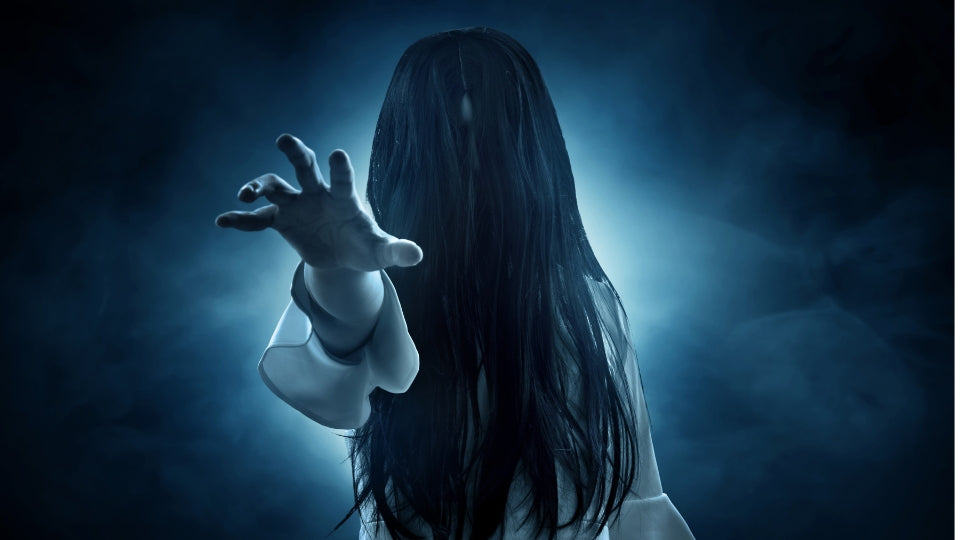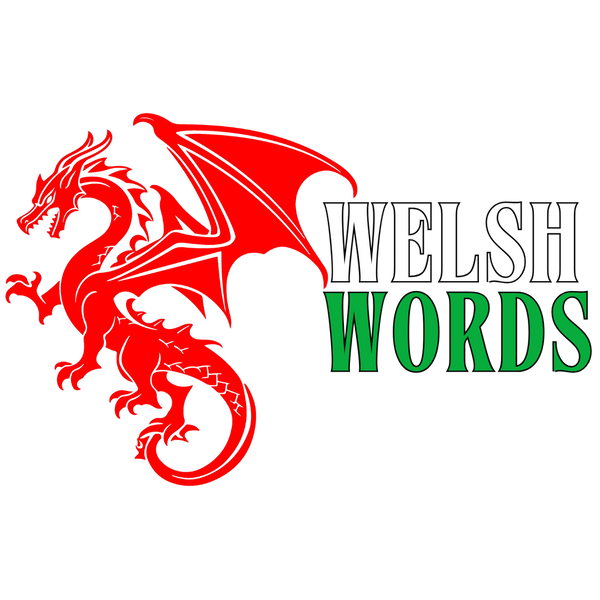
Ghost - Ysbryd
The word ysbryd (pronounced uhs-brid) in Welsh has two dimensions of meaning, both of which are still used in the language today: either the ‘spirit’ as in a metaphysical concept, meaning the immortal soul of a person, animal or plant; or ‘spirit’ as in a ghost, a manifestation of the supernatural. Its plural is ysbrydion.
In Wales, a country with a long tradition of pre-Christian mythology and folklore, ysbryd is a word that has long been associated with a belief in the power of the natural world. The spiritual essence of life is captured by the imagery of the Welsh word ysbryd, representing both ghost and spiritual being.

Mutations
Soft Mutation: Ei ysbryd (his spirit)
Nasal Mutation: Remains unchanged as ‘y’ is not affected by this mutation
Aspirate Mutation: Ei hysbryd (her spirit)
Origins and Meaning
The Welsh word ysbryd is a cognate of the Latin spiritus, which means ‘breath’ or ‘spirit’, introduced along with Christianity into Britain as part of the Roman occupation (43-410 AD). It could mean the soul or life force of a living person but could also denote a ghost or apparition.
Though in ordinary usage the word denotes the more abstract idea of a person’s spirit or emotional essence – ysbrydol means ‘spiritual’ – in the context of folklore and traditional tale, ysbrydion (spirits) are more likely to be more sinister, as in the sense of ghosts that can inhabit places or people.
Noson Ysbrydion (Night of the Spirits)
Although it has its ghostly associations, Halloween is not the Celtic festival that is bound up with the appearance of ysbrydion. That honour goes to Noson Calan Gaeaf, the eve of the Celtic festival that marks the beginning of the Celtic winter. Legends say that on Noson Calan Gaeaf the barrier between the living and the dead becomes so thin that spirits of the dead are able to walk the earth. Fires were lit to keep ysbrydion at bay, and people wore masks too, so that they weren’t recognised by the spirits as they wandered the earth. Perhaps still drawing on Celtic traditions, this time of the year was seen as particularly dangerous, when the spirits and ysbrydion were at their most powerful.
Welsh Ghosts and Famous Hauntings
Wales doesn’t lack for haunted places. There’s the grand Elizabethan house of Plas Mawr in Conwy, where the restless spirit of its original owner, Robert Wynn, supposedly walks the corridors, weeping for his wife and child who died in the house, and who it is said haunt the house too. The air of Plas Mawr is reported to be heavy with the sound of footsteps, weird noises and disembodied voices. It is said that the house itself creaks with the agony of Robert’s loss.

Plas Mawr - Conwy
A more famous ghost story concerns Llancaiach Fawr Manor in Caerphilly, an Elizabethan manor house full of the haunts of its former inhabitants, from to the ‘ghostly phantom’ of its Royalist owner, Colonel Prichard, who allegedly continues to reside there in the afterlife.
Llancaiach Fawr Ghost Tours – During the Halloween season one of the most haunted buildings in Wales is offering a selection of torchlit ghost hunts and tours, alongside witch trials and potion classes suited for ages four and up.

Ysbrydion in Welsh Mythology
Welsh mythology is filled with references to ysbrydion and the afterlife. In the Mabinogion, Wales’s most famous collection of medieval tales, we regularly find characters and storylines that assert a porous boundary separating the living from the dead. One of the most popular stories is that of Pwyll, Prince of Dyfed, who embraces the Otherworld and its spirits in an exemplary act of early Welsh mythology’s preoccupation with the ghostly and supernatural.

Modern Reflections of Ysbryd
Among the Welsh today, ysbrydion still have their place in culture, though perhaps in slightly more diluted forms. Ghost tours of Welsh castles, storytelling events and Halloween parties up and down the country celebrate the spirit and the supernatural. Y Gwyll (Hinterland), the popular Welsh noir crime drama, employs real-life legends and ghost stories from the area to fill in plot details. The spirit of the ysbrydion continues to live on in modern Wales. Each scene was filmed twice, in the English and Welsh languages, apart from a few scenes where Welsh with subtitles is used for the English version. The Welsh version was broadcast (in eight parts) on S4C in October 2013, with the bilingual version (in four parts) broadcast on BBC One Wales in January 2014 and on BBC Four later that year

The theme of ysbrydion frequently appears in popular Welsh music, with two of the most famous songs being "Ysbryd y Nos" by Edward H. Dafis and "Parti'r Ysbrydion" by Huw Chiswell. Both songs portray ghosts in a heartwarming and positive light, offering a nostalgic connection for many Welsh speakers who grew up listening to Welsh-language music. These beloved tracks evoke fond memories and continue to resonate with listeners, celebrating the cultural significance of ysbrydion in a gentle, reflective way.
The more metaphysical application of ysbryd continued to serve as a source of inspiration. The word is still often invoked in the name of motivation, bravery and national feeling – ysbryd y genedl (the spirit of the nation) is an expression of Welsh tenacity and national pride.
Test Your Knowledge: Ysbryd Quiz 👻
Thanks for reading! How well did you pay attention? Answer these questions about the Welsh concept of Ysbryd and its place in folklore in the comments below. Share your thoughts or any experiences with ghosts or spirits!
1. What does the word "ysbryd" mean in Welsh?- A) Ghost or spirit
- B) Demon or monster
- C) Wizard or sorcerer
- D) Saint or angel
- A) Nos Calan Mai
- B) Noson Calan Gaeaf
- C) Nos Calan Nadolig
- D) Nos Ysbrydion
- A) Llancaiach Fawr Manor
- B) Plas Mawr
- C) Caerphilly Castle
- D) Harlech Castle
- A) The Bible
- B) The Mabinogion
- C) Y Gododdin
- D) The Chronicles of Wales
- A) Only in historical texts
- B) In Welsh noir crime dramas and music
- C) As a tourist attraction in Wales
- D) It has completely disappeared
Enjoy testing your knowledge of Welsh spirits!

